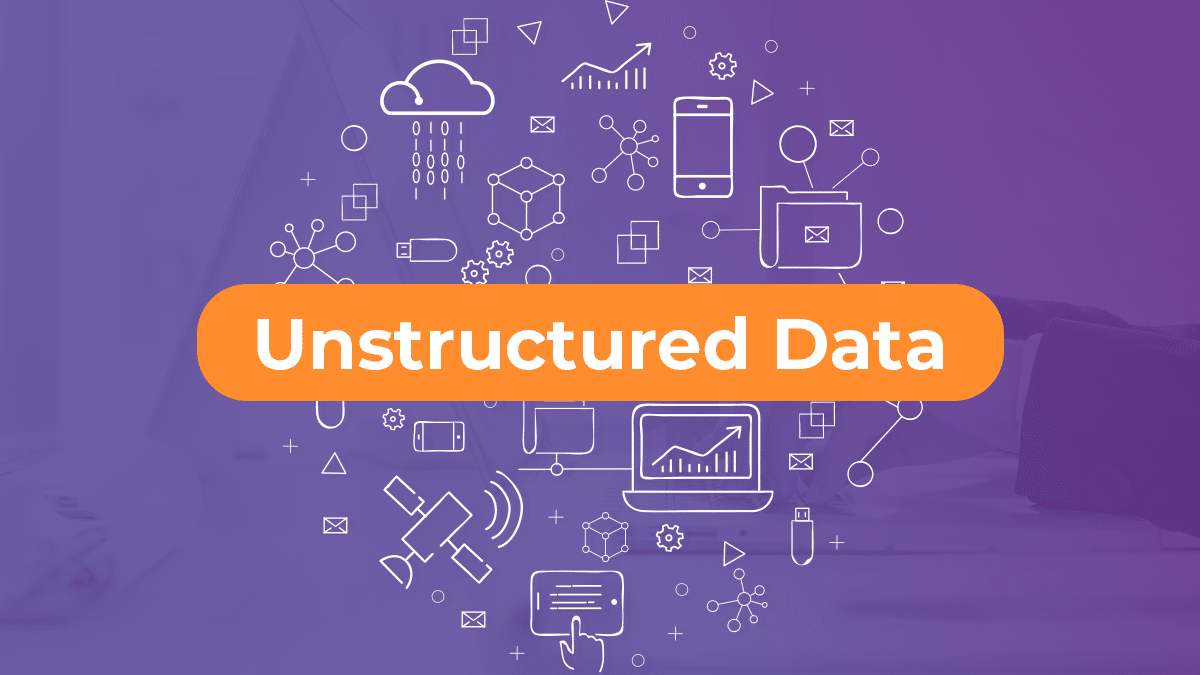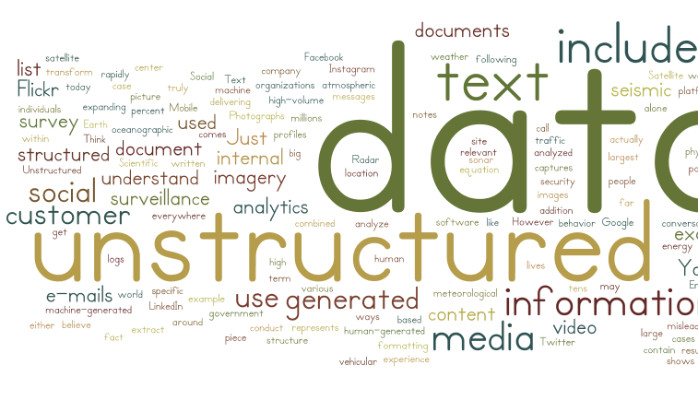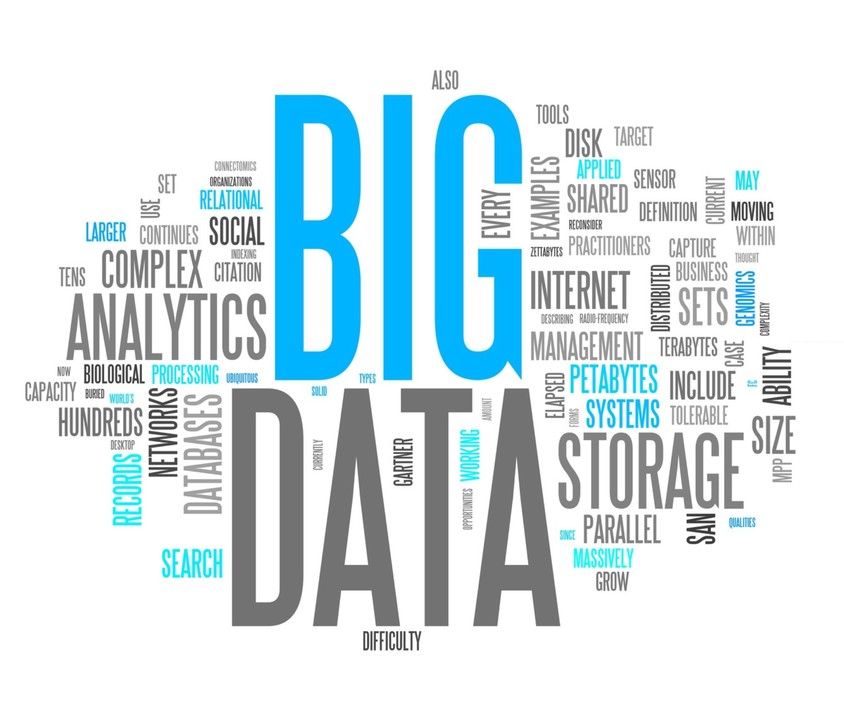Optimizing Unstructured Data for Enhanced Business Intelligence
In the realm of artificial intelligence and machine learning, the proliferation of data-driven applications has been remarkable. However, the challenge lies in handling data that defies conventional structuring, existing in diverse and unorganized formats. This is where the management of unstructured data plays a pivotal role—it serves as the linchpin for processing information that doesn't neatly conform to tabular structures.
Unstructured data encompasses a spectrum of digital information formats, ranging from spreadsheets, PDFs, and images, to video and audio files. Its pervasive nature is evident across the digital landscape, making its presence felt on virtually every website visited. Whether in the form of blog comments, product reviews on e-commerce platforms, or other user-generated content, unstructured data permeates the online sphere.
The application of advanced technologies, such as facial recognition, is instrumental in deciphering and extracting meaningful insights from unstructured data. Discover innovative solutions that harness the power of AI and machine learning for effective data management here.
Unraveling the Complexity of Unstructured Data
Unstructured data is any data that's not organized in a way that a computer can easily read it. Unstructured data usually consists of text, but it can also be images, video, or audio, and sometimes even combinations of those things.
Unstructured data is often referred to as "dark matter," because it's so difficult to analyze without special tools like natural language processing software (NLP). NLP acts as a beacon in this data wilderness, enabling computers to comprehend human language and, in turn, transform it into structured data.
This transformative process facilitates integration with business intelligence applications like Excel or Tableau, ushering unstructured data from obscurity into a realm where it harmoniously contributes to informed decision-making.
Defining Unstructured Data
Unstructured data is any data that does not have a formal data model. It may be stored in databases, files, or documents. Unstructured data is typically unstructured in its form and may be difficult to process and analyze.
Unstructured data can include:
a. Emails;
b. Spreadsheets (e.g., Microsoft Excel);
c. Word documents (e.g., Microsoft Word).
Challenges in Unstructured Data Handling
a. Unstructured data is not easily managed.
b. Unstructured data is not easily secured.
c. Unstructured data is not easily understood.
d. Unstructured data is not easily integrated, shared, or analyzed.
Sourcing Unstructured Data Effectively
Unstructured data is often found in the form of images, video, audio, and text. It can be difficult to source this type of information because it's not organized in a traditional manner. For example, if you want to find information about your customers' favorite places to eat in your city on social media platforms like Facebook Twitter, or even Instagram, you'll need some time and effort before you can get started.
Unstructured data sources include:
a. Social media platforms such as Facebook and Twitter;
b. E-mails (both internal and external);
c. Text messages sent via mobile phones;
d. Documents created by employees using office software such as Microsoft Word or Google Docs;
e. Webpages indexed by search engines such as Bing/Google Search Console etc., which include product reviews from e-commerce sites like Amazon & Walmart Marketplace etc.
Organizing Unstructured Information for Analysis
Organizing unstructured information can help you better understand it. This is important because, unlike structured data, there are no rules governing how unstructured information should be organized.
You can organize unstructured data in many ways:
a. By a person or organization name;
b. By date range;
c. By topic (such as products sold);
d. Or any other scheme that works for your business needs.
However, organizing and tagging data manually is very time-consuming and error-prone - so it's best to use a tool like Excel or SQLite if you need only simple categorization of your documents. If there are too many documents for this approach (say tens of thousands), then consider using dedicated software.
Natural Language Processing (NLP) Techniques
Natural language processing (NLP) is a field of computer science that focuses on the interactions between computers and human (natural) languages. NLP can be used to extract information from unstructured data such as text documents, emails, social media posts, and more. NLP is also used in text mining, speech recognition, machine translation, and many other applications that involve analyzing human language content.
The goal of NLP is to enable machines to understand human language as it's spoken or written so that they can communicate with humans in their own language without requiring users to learn a programming language first.
Image and Video Analysis Tools
Image and video analysis tools can be used to find patterns, detect anomalies, and identify trends. They are useful for analyzing images and videos because they can be used to identify objects, people, places, and events. Image/video analysis can also be used for tracking changes in the environment (e.g., detecting when a building is destroyed). Finally, image/video analysis can help monitor security by identifying suspicious activity or individuals.
Speech Recognition and Audio Data Processing
Speech recognition is a technology that converts spoken words into text. It can be used in many different applications, such as dictation and transcription, hands-free control of computers and other devices, and more.
Speech recognition works by breaking down audio into small segments called frames. Each frame contains time-domain information about the characteristics of your speech at that moment (for example: pitch and intensity). The speech recognizer uses this data to create an acoustic model or representation of all possible sounds in your language that could be uttered as part of a word or phrase. Then it compares this acoustic model against what you actually said; if there's enough similarity between them then we say it "recognizes" what was said.
Building Holistic Business Intelligence
A holistic view of your business is the foundation for making informed decisions and understanding your customers. In order to create such a view, you need to bring together all of the disparate sources of information about your company, from marketing campaigns to customer service calls, and organize them into one place where they can be easily analyzed and acted upon.
To build a holistic view of your business intelligence (BI), first identify which data sources are most important for understanding how your organization functions:
a. Customer interactions: Which channels do customers use? What are their preferences? How often do they contact customer support? What issues do they tend to encounter? These questions will help determine what kind of information needs tracking in order to improve customer experience across all channels.
a. Financial performance: Are sales growing or declining? Are costs increasing faster than revenues? Do certain products show signs of profitability while others struggle; if so why does this happen so often with product X but not Y despite having similar features/benefits etc..
Managing Large Volumes of Unstructured Data
The management of unstructured data is crucial to business intelligence. Information that has been collected, analyzed, and integrated into your company's processes can be used to make decisions that benefit the organization as a whole. However, if you don't have control over this information and its associated policies, it can cause more harm than good.
To ensure that your BI systems are working efficiently with large amounts of unstructured data:
a. Establish clear goals for managing your organization's information assets; these will guide all future efforts in this area.
b. Implement effective governance policies for managing who has access to which types of information within the company (and how long they have access).
Security Measures for Unstructured Data
Security is an important consideration for both unstructured and structured data. It's critical that you take the necessary steps to protect both sets of information, as they can be used to compromise your company's security or expose sensitive information. To prevent this from happening, it's important to follow these best practices:
a. Establish a secure network where only authorized individuals can access the files they need. This means creating firewalls, limiting access rights, and encrypting all data transmissions between systems.
b. Ensure that all employees are properly trained in proper information handling procedures so they can avoid making mistakes when interacting with sensitive documents (such as sending emails containing sensitive information).
In addition to the measures outlined above, several solutions available today offer advanced threat protection features, such as antivirus software combined with antispyware capabilities, designed specifically for businesses that have difficulty managing their own IT infrastructure due to a lack of internal resources.
Furthermore, it might be convenient and more productive to have archive records storage services to safeguard sensitive information that needs to be preserved for compliance or legal purposes; this can help ensure that important data is securely stored and easily accessible when needed without taking up valuable space in the office.
Conclusion
With so much information at our fingertips, it's important to understand what data is relevant and how we can use it effectively. Unstructured data management is a complex process that requires careful planning and implementation. But by following these tips, you'll be on your way toward creating an informed decision-making environment that will help your business grow in today's digital world.











